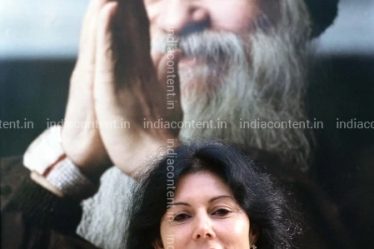
The Nation fondly remembered and saluted Former President of India, Dr. APJ Abdul Kalam on his 88th Birth Anniversary on 15th October. Prime Minister Narendra Modi tweeted on Dr. Kalam’s Jayanti and also shared a video to pay tribute to Abdul Kalam. Students from various colleges celebrated in Visakhapatnam by participating in 25000 sq ft tricolor flag rally.

Abdul Kalam was an aerospace scientist and was also known as the Missile Man of India. He also served as the 11th President of India from 2002 to 2007. In 2010 the United Nations decided to celebrate India’s Former President and great scientist APJ Abdul Kalam’s birthday as World Students Day.
Abdul Kalam Biography:
APJ Abdul Kalam was born into a middle class Tamil Muslim family to Jainulabdeen who was a boat owner and imam of a local mosque and Ashiamma in Rameswaram. His father had neither much formal education nor much wealth. Despite these disadvantages he possessed great wisdom and true generosity spirit. Kalam was born the youngest of four brothers and one sister. They lived in their ancestral house which was built in the middle of the 19th Century. The ancestors of Kalam had been wealthy traders and landowners, with numerous properties with business involving trading groceries and ferrying pilgrims between the mainland and Pamban.
Kalam throughout his life have tried to balance science and technology through his father’s spiritual leanings. He was convinced that there exists a divine power that can lift one up from confusion, misery and failure and guide one to one’s true place. Kalam had average grades in his school years but his teachers described him as a bright and hardworking student who had a strong aspiration to learn.

He completed his high school education at the Schwartz Higher Secondary School and went on to attend Saint Joseph’s College in Tiruchirappalli. He graduated in physics in 1954 and moved to Madras in 1955 to study aerospace engineering in Madras Institute of Technology. He barely missed attaining his dream of becoming a fighter pilot as only eight positions were available in the IAF and he was placed ninth in qualifiers list.
After completing the graduation, Abdul Kalam joined the Aeronautical Development Establishment department of the Defence Research and Development Organization (DRDO) as a scientist. He became a member of the DRDS. He was also a part of the INCOSPAR committee working under the renowned space scientist, Vikram Sarabhai.
APJ Abdul Kalam was transferred to the Indian Space Research Organization (ISRO) in 1969 and was made the project director of India’s first Satellite Launch Vehicle (SLV-III). It successfully deployed the Rohini satellite in near-earth orbit in July 1980. He visited NASA‘s Langley Research Center in Hampton, Goddard Space Flight Center in Greenbelt and Wallops Flight Facility from 1963 to 1964.
Kalam made an attempt to develop the Polar Satellite Launch Vehicle (PSLV) and SLV-III projects between the 1970s and 1990s. Both of the projects were proved to be successful. Kalam’s research projects brought him great accolades and prestige which encouraged the government to initiate an advanced missile programme under his directorship. He played a major part in developing many missiles including Agni and Prithvi. From July 1992 to December 1999, Abdul Kalam was employed as the Chief Scientific Adviser to the Prime Minister and Secretary of the Defence Research and Development Organization. He played an intensive political and technological role during the nuclear tests of The Pokhran-II.

Abdul Kalam won the 2002 presidential election and became the 11th President of India, succeeding K. R. Narayanan. He was compassionately known as the People’s President. After the end of his term on 20 June 2007, Kalam became a visiting professor at the IIM Shillong, the IIM Ahmedabad, and the IIM Indore, chancellor of the Indian Institute of Space Science and Technology Thiruvananthapuram and professor of Aerospace Engineering at Anna University.
He also taught information technology at the International Institute of Information Technology, Hyderabad, and technology at Banaras Hindu University and Anna University. On 27 July 2015, Abdul Kalam expired due to a sudden cardiac arrest while he was delivering a lecture on ‘Creating a Livable Planet Earth’ at the IIM Shillong.
Abdul Kalam Awards:
- The Government of India honored him with the Padma Bhushan in 1981 and the Padma Vibhushan in 1990 for his work with ISRO and DRDO.
- Kalam received the Bharat Ratna in 1997 for his remarkable contribution to the scientific research and modernization of defence technology in India.
- He was the recipient of the Von Braun Award from the National Space Society in 2013.
Abdul Kalam Achievements:
- The Tamil Nadu state government announced that his birthday would be celebrated as Youth Renaissance Day across the state.
- The state government further announced the Dr. A.P.J. Abdul Kalam Award which constituted of an 8-gram gold medal, a certificate and ₹500,000.
Prime Minister, Narendra Modi released postage stamps marking Kalam at DRDO Bhawan on his birth anniversary.
You can purchase various other content images from the https://www.indiacontent.in


